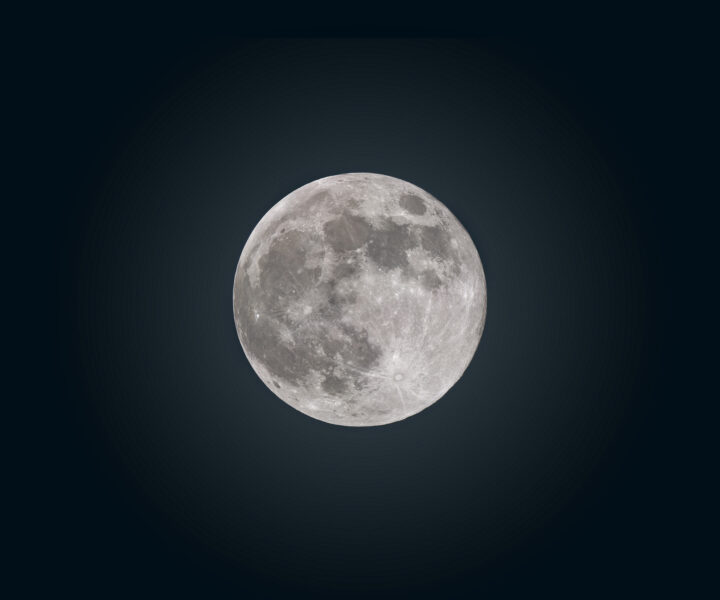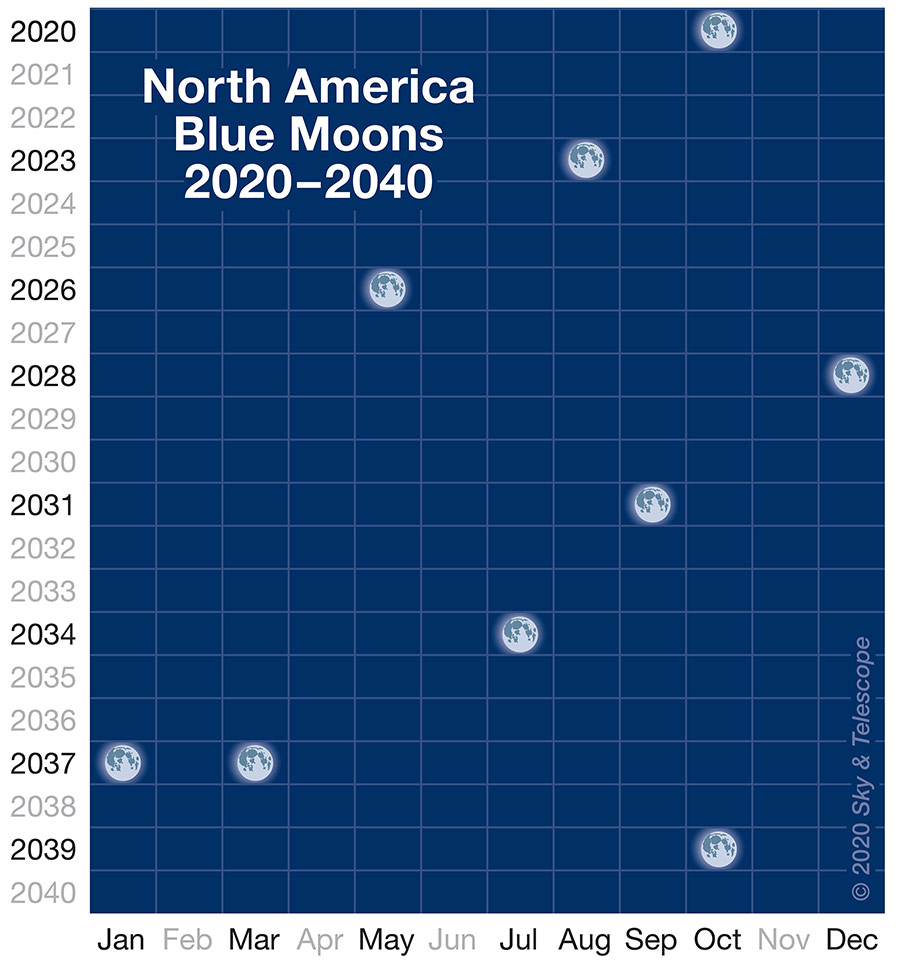Contacts:
Diana Hannikainen, Observing Editor, Sky & Telescope
+1-855-638-5388 x22100, [email protected]
Gary Seronik, Consulting Editor, Sky & Telescope
[email protected]
Rick Fienberg, Press Officer, American Astronomical Society
+1-202-328-2010 x116, [email protected]
Note to Editors/Producers: This release is accompanied by high-quality graphics; see the end of this release for the images and links to download.
As twilight descends on All Hallows’ Eve, a full Moon will rise in the eastern sky for the second time this month (the first time was on October 1st). And though it will appear as brilliantly white as usual, many will call it a “Blue Moon.”
In modern usage, “Blue Moon” has come to refer to the second full Moon in a month — but that hasn't always been the case. “This colorful term is actually a calendrical goof that worked its way into the pages of Sky & Telescope back in March 1946,” explains Diana Hannikainen (pronounced HUHN-ih-KY-nen), Sky & Telescope’s Observing Editor. "It spread to the world from there."
Historically, the term “Blue Moon” was more often not an astronomical term: In older songs it's used as a symbol of sadness or loneliness, while “once in a blue Moon" means a rare event. Only exceedingly rarely does the Moon actually turn blue in our sky — when volcanic eruptions or forest fires send lots of smoke and fine dust into the atmosphere.
Editors and contributors to Sky & Telescope have traced the traditional astronomical definition to the Maine Farmers’ Almanac in the late 1930s. The Almanac consistently used the term to refer to the third full Moon in a season containing four of them (rather than the usual three). But in 1946, amateur astronomer and frequent contributor to Sky & Telescope James Hugh Pruett (1886–1955) incorrectly interpreted the Almanac's description, and the second-full-Moon-in-one-month usage was born.
Sky & Telescope admitted to its “Blue Moon blooper" in its May 1999 issue. Texas astronomer-historian Donald W. Olson, along with research librarian Margaret Vaverek at Texas State University, worked with the magazine’s editors at the time to figure out the origin of the mistake, and how the two-full-Moons-in-a-month meaning spread into the English language.
By either definition, Blue Moons are still rare. They happen about once every 2.7 years on average. Using the newer definition, we’ll have to wait until August 2023 for the next Blue Moon after this one.
So while you don your goblin costume and wait for the Moon to rise on the evening of Halloween, you could treat yourself to a Blue Moon cocktail: In a tall glass filled with ice, mix four parts of gin to one part of blue curaçao and add a twist of lemon. Enjoy!
Sky & Telescope is making the illustrations below available to editors and producers. Permission is granted for nonexclusive use in print and broadcast media, as long as appropriate credits (as noted) are included. Web publication must include a link to skyandtelescope.org.

Gary Seronik

Sky & Telescope
For skywatching information and astronomy news, visit SkyandTelescope.org or pick up Sky & Telescope magazine, the essential guide to astronomy since 1941. Sky & Telescope and SkyandTelescope.org are published by the American Astronomical Society, along with SkyWatch (an annual guide to the night sky) as well as books, star atlases, posters, prints, globes, apps, and other products for astronomy enthusiasts.
The American Astronomical Society (AAS), established in 1899, is the major organization of professional astronomers in North America. Its membership (approx. 8,000) also includes physicists, mathematicians, geologists, engineers, and others whose research interests lie within the broad spectrum of subjects now comprising the astronomical sciences. The mission of the American Astronomical Society is to enhance and share humanity's scientific understanding of the universe, which it achieves through publishing, meeting organization, science advocacy, education and outreach, and training and professional development.
 0
0